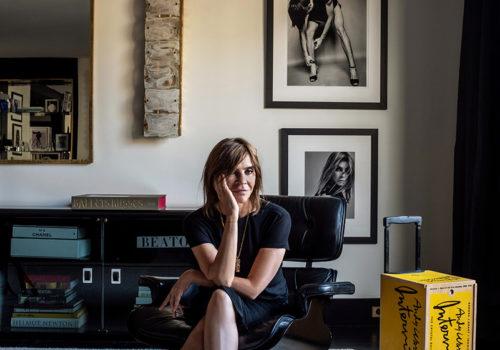2024 is an important year for Paris Photo, which returns to the Grand Palais after a long period of renovations. L’Œil de la Photographie interviewed Florence Bourgeois, who has been its director for ten years.
This edition marks the eagerly awaited return of Paris Photo to the Grand Palais.
Indeed, there is great excitement surrounding our return to this historic and majestic setting, as we will have 21,000 square meters of space, compared to 12,000 at the Grand Palais Éphémère and 16,000 when we were at the Grand Palais. This represents a step up for Paris Photo in terms of space, and we also have an enriched program. This applies to both the commercial section and the various sectors and pathways.
Can you tell us about the Voices sector, which you are inaugurating this year?
What initially interested us in creating this sector was working with exhibition curators, as it allows us to broaden perspectives. Each selected curator has vast expertise in a specific area of photography. Elena Navarro, founder of FotoMéxico, has a deep understanding of the South American and Spanish scene. Azu Nwagbogu, founder of the Lagos Photo Festival and curator of the Benin pavilion at the Venice Biennale, brings a broader vision through a project based on archives. Sonia Voss offers a sharp view of the Eastern and Northern European scenes. Together, they allow us to present artists and galleries that might not otherwise have come to the fair.
The new Grand Palais venue allows for another major return, that of the Prismes sector, which highlights the monumental aspect of photography. Can you tell us more?
We wanted to showcase monumental projects and installations as they break out of the traditional framework of photography. We decided not to centralize this sector but to distribute these projects within the nave and the main sector. For the first time, visitors will be able to see August Sander’s spectacular People from the Twentieth Century series, with 619 prints, at the fair’s entrance (Julian Sander Gallery), or 1,078 blue sky photos captured on former Nazi camp sites, through which photographer Antons Kusters addresses themes of trauma and commemoration (In-Dependance by Ibasho). The various Prismes projects allow us to show photography from a different, more deconstructed angle with a new visual language.
Jim Jarmusch is the guest of honor at this edition. Is this choice part of your desire to broaden the scope of photography by approaching it here through the lens of cinema?
There are two interesting things about Jim Jarmusch. He offers a tour of around thirty works at the fair, providing a different perspective. This is important at such a dense fair, as visitors can choose to focus on specific tours—Jarmusch’s perspective, for example, or ELLES x Paris Photo. Furthermore, the filmmaker will hold a conversation at the fair, giving attendees the opportunity to hear from a prominent figure in cinema and photography.
The “ELLES x Paris Photo” sector, in partnership with Kering, has been highlighting female artists for six years. What changes have there been?
When we launched this sector six years ago, only 20% of the artists at the fair were women. Last year, this figure rose to 36%, and this year it’s up to 38%. This progress is the result of awareness efforts from the galleries and the public. Additionally, Kering is providing extra support this year through grants awarded to four galleries exclusively featuring female artists: Monitor, Higher Pictures, Martini & Ronchetti, and Nadja Vilenne.
How is the photography market evolving?
The context is rather anxiety-inducing, both internationally and geopolitically, as well as for the art market in general. Decisions may take a little longer to be made. Nevertheless, this year we have works ranging from €1,000 to €2.5 million, with a Gordon Matta-Clark presented by Patinoire Royale. The market is very much alive; money is flowing, and sales are ongoing. As for Paris Photo, we are maintaining our position and remain a strong support for galleries by choosing not to significantly increase prices from one year to the next. This doesn’t mean that we aren’t facing very large increases in costs from our service providers.
What are your expectations for this edition?
My expectations are twofold: first, that exhibitors will connect with collectors and institutions. This is, in fact, why American galleries attend, knowing that over 170 museums and museum groups will be at the fair. For the general public, I hope visitors come to the fair to discover photography and engage with the galleries and the publishers who are there to promote the medium. We’re fortunate to have tripled our capacity this year thanks to our additional space. So, we’re expecting a large crowd.
In your view, is Paris still the photography capital?
Undoubtedly. This is evident with all the satellite projects being set up, and I believe that Paris Photo is their backbone: the recently established LUX network, Photodays, PhotoSaintGermain, the Approche fair, and many more… There are many events surrounding photography during the week of then fair, and we are extremely proud of that.
More informations :
















